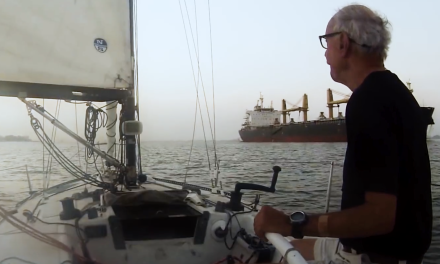
One of the challenges and pleasures, of sailing good old boats is that you run the boat yourself. A big responsibility, one which requires experience, skill, and knowledge of many things. Much of the knowledge required is of things we use frequently, so it is at our fingertips. But there are many bits of knowledge that are infrequently used, some (we hope) never. Yet this is information we must know about and be able to access quickly should the situation arise. When you are out on your boat and have to make a decision, you often won’t have the option of asking for advice or technical information. Then you consult one of the references or guidebooks you keep aboard. Since space is limited on boats, we need to keep the few books that give us the most information in a format that allows us to make use of it.
The Boater’s Handbook has several good sections that offer sound and clear advice and several useful tables. Unfortunately, some parts are unclear, outdated and, in one or two cases, poor information. The section on emergencies is adequate, as far as it goes. It does not address being towed and does not tell you what to expect in the event of a helicopter rescue. The radio procedures section has some good bits in it but is not presented in a clear form. The section on maintenance has some very useful parts. Full-size drawings of various screw sizes would enable you to stop guessing and save a return trip to the hardware store. Going through the list and noting engine and tank capacities and repair part numbers is a good idea and will occupy you on a nasty winter night.
The book has very few “don’t do this” items in it. Cautions about staying away from tugs and tows and ships in channels should be very clear, but they are not. I don’t know where the table of recommended anchor gear sizes came from, but you won’t see my Tartan 34 anchored on a 3/8-inch rode. A reference to silicone and polysulfide rubber caulking compounds as “new” must be a carryover from the first edition. The flag etiquette section takes up space and has a lot of fluff in it.
Elbert Maloney’s book is a useful collection of information that has some value for novices, but my choice for on board reference is still the venerable, but regularly updated, Chapman’s.
The Boater’s Handbook 3rd Revised Edition, By Elbert S. Maloney (Hearst Books, 2002; 304 pages)




